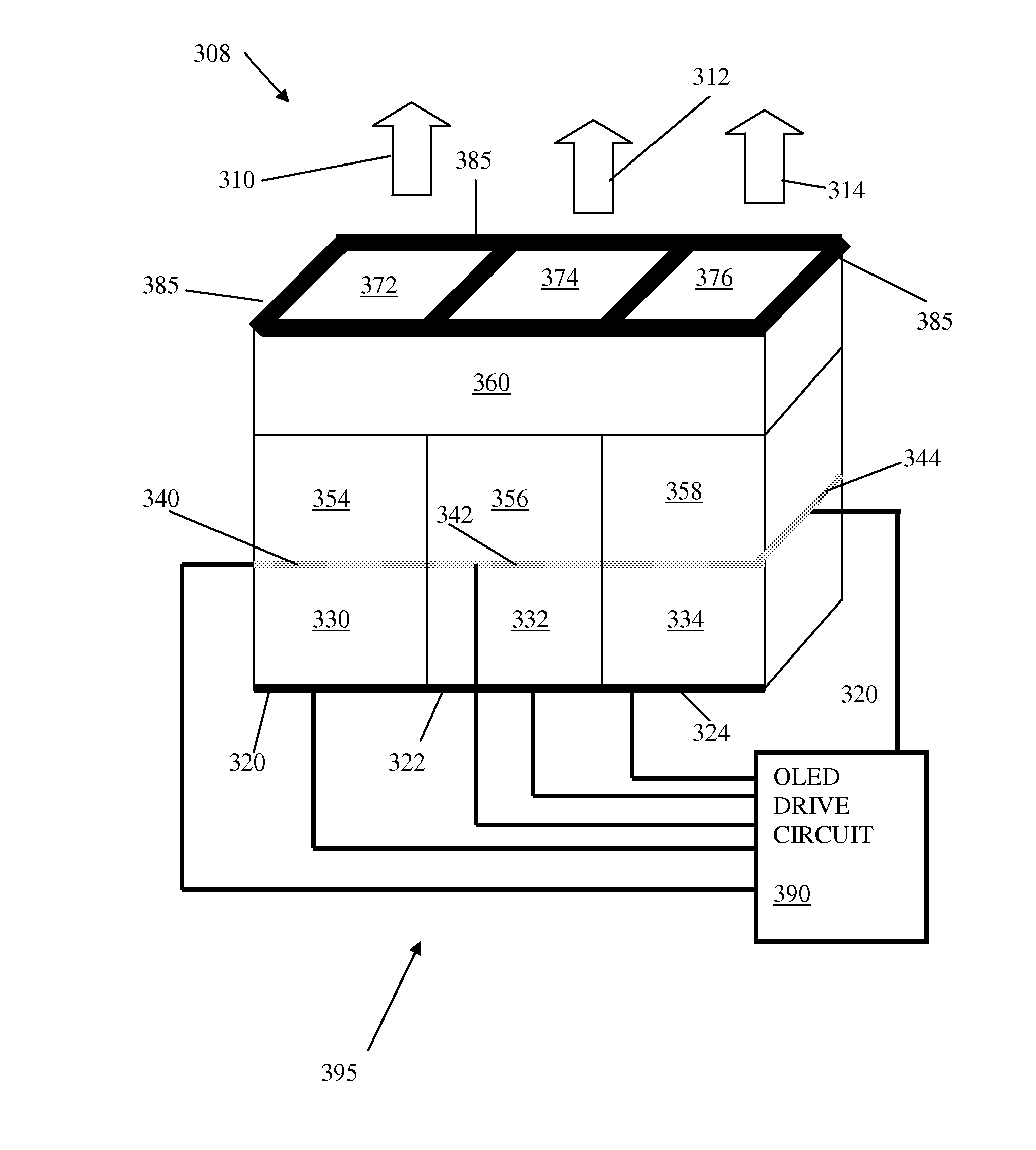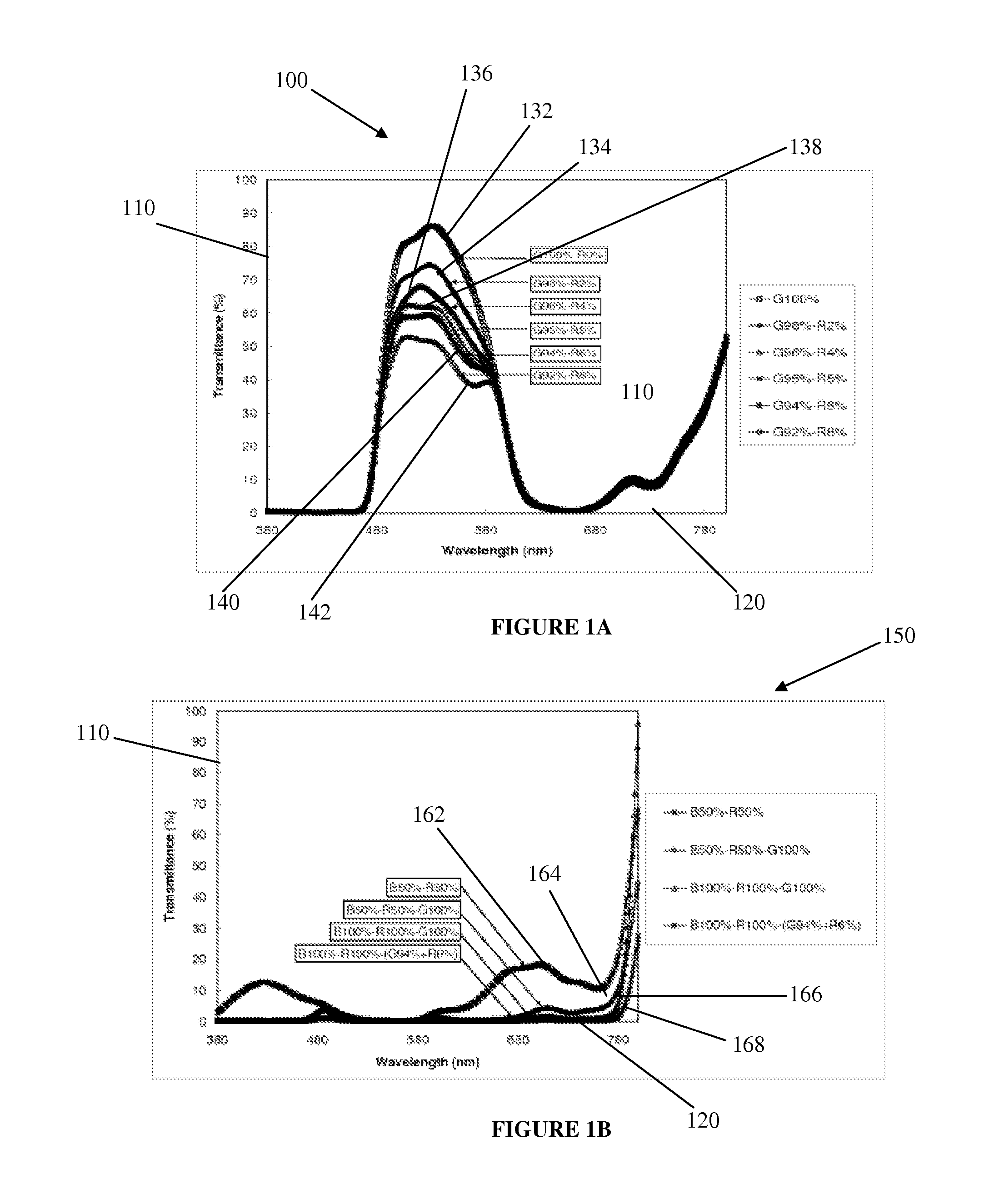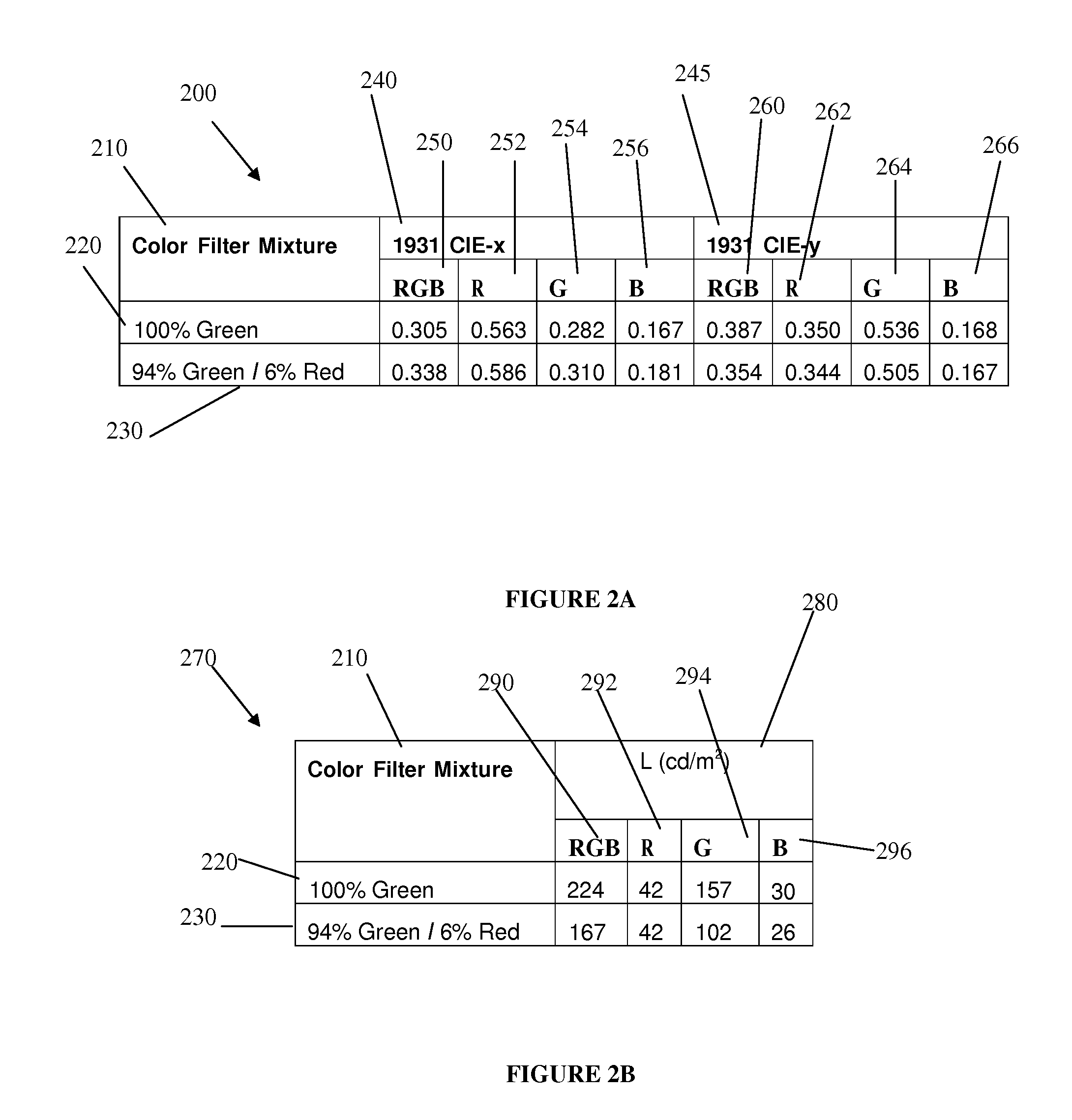Method of tuning display chromaticity by mixing color filter materials and device having mixed color filter materials
a color filter and chromaticity technology, applied in the direction of discharge tube luminescnet screens, discharge tube/lamp details, electric discharge lamps, etc., can solve the problems of not always being able to achieve the desired thickness of a color filter layer, not always being able to achieve the desired transmittance, etc., to reduce unwanted light output, improve the white balance of the display, and reduce the transmittance of visible light
- Summary
- Abstract
- Description
- Claims
- Application Information
AI Technical Summary
Benefits of technology
Problems solved by technology
Method used
Image
Examples
Embodiment Construction
[0047]The present invention proposes to use mixtures of at least two or more color filter materials in one layer, or in combination with individual color filter layers. The layer or layers will be deposited on at least one sub-pixel within a group of three RGB sub-pixels to subdue parasitic contribution of emission due to electrical current leakage from an inactive sub-pixel.
[0048]The present invention proposes to use mixtures of at least two or more color filter materials in one layer, or in combination with individual color filter layers which will be deposited on at least one sub-pixel within a group of three RGB sub-pixels or between the sub-pixels. The present invention proposes to use mixtures of at least two or more color filter materials to construct a single opaque layer that can be placed on desired locations on OLED display to block undesired emission across entire visible optical band.
[0049]FIG. 1A is graph 100 of transmittance with respect to wavelength for exemplary gr...
PUM
 Login to View More
Login to View More Abstract
Description
Claims
Application Information
 Login to View More
Login to View More - R&D
- Intellectual Property
- Life Sciences
- Materials
- Tech Scout
- Unparalleled Data Quality
- Higher Quality Content
- 60% Fewer Hallucinations
Browse by: Latest US Patents, China's latest patents, Technical Efficacy Thesaurus, Application Domain, Technology Topic, Popular Technical Reports.
© 2025 PatSnap. All rights reserved.Legal|Privacy policy|Modern Slavery Act Transparency Statement|Sitemap|About US| Contact US: help@patsnap.com



